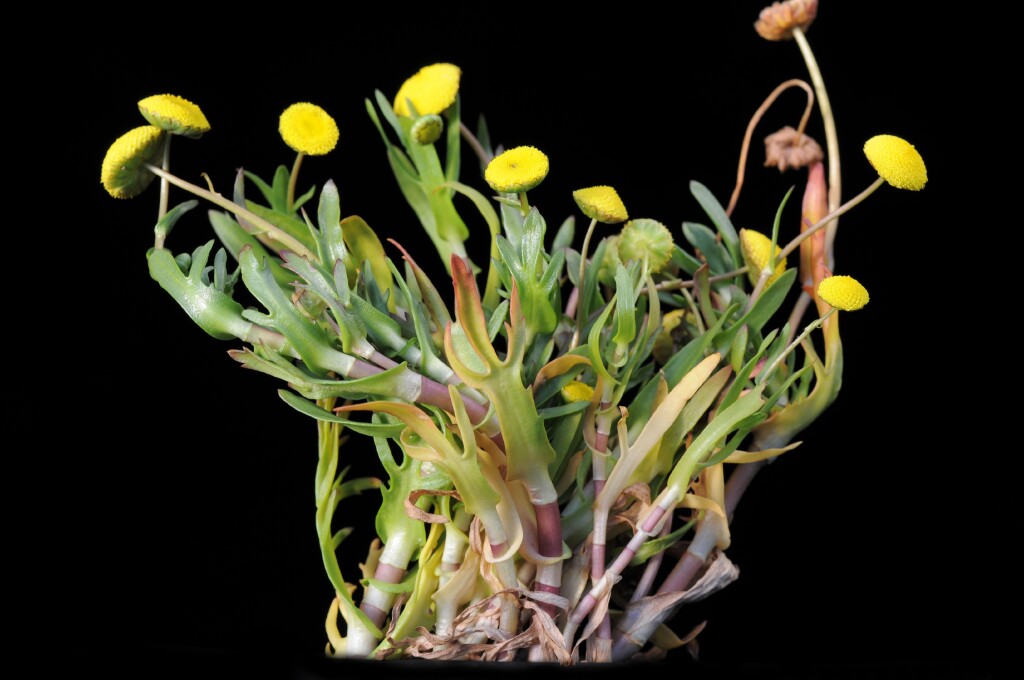Cotula coronopifolia
L. Water-buttonsErect to spreading glabrous perennial to 20 cm high, often somewhat succulent; older stems rooting at nodes. Lower leaves oblong, 1–8 cm long, 2–10 mm wide, usually pinnatifid, rarely entire, sheathing at base; upper leaves smaller, entire. Capitula 5–12 mm diam., terminal and axillary; peduncles 2–8 cm long, erect; involucral bracts many, ovate to lanceolate, 3–5 mm long. Female florets 1-seriate, corolla absent; bisexual florets numerous, corolla c. 1 mm long. Cypselas of female florets oblong, 1.5–2 mm long, flat, glandular, broadly winged; cypselas of bisexual florets narrow-oblong, 1–2 mm long, somewhat compressed, glandular, with narrow marginal ridges. Flowers mainly winter and spring.
LoM, MuM, Wim, GleP, Brid, VVP, VRiv, MSB, RobP, MuF, GipP, OtP, WaP, Gold, CVU, GGr, DunT, NIS, EGL, EGU, WPro, HSF, HNF, OtR, Strz. Also naturalised WA, SA, Qld, NSW, Tas. Native to South Africa, ?New Zealand. Widespread and abundant throughout lowland Victoria, in damp or wet places. Usually grows as an emergent aquatic in fresh, or more often brackish to saline water.
The widespread and apparently stable distribution of this taxon in Australia, and the early collection dates of many specimens-dating back to the middle of the 19th century in Victoria and much earlier in New South Wales-have led to the belief that it is native. Most recent authors, however, regard it as introduced due to its wide distribution in temperate regions of the world. It is generally regarded as native in New Zealand. For further information on this debate see Heyligers (1995) and Romanowski (1994, 1995).
Jeanes, J.A. (1999). Asteraceae. In: Walsh, N.G.; Entwisle, T.J., Flora of Victoria Vol. 4, Cornaceae to Asteraceae, pp. 652–666. Inkata Press, Melbourne.
 Spinning
SpinningHeyligers, P. (1995). Waterbuttons, Cotula coronopifolia.. Indigenotes 8: 2–4.
Romanowski, N. (1994). Cotula coronopifolia: return of a native.. Indigenotes 7: 2,3.
Romanowski, N. (1995). More on Waterbuttons, Cotula coronpifolia.. Indigenotes 8: 6,7.





